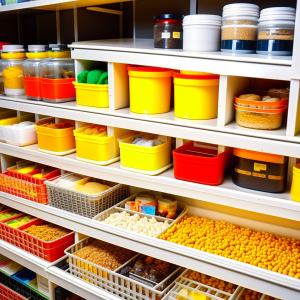
Survival Food Options: Essential Tips for Storage and Prep
Actionable Strategies for Effectively Preparing and Storing Emergency Food Supplies
Access to adequate food supplies is essential during emergencies, which can stem from natural disasters, unanticipated power outages, or other unforeseen events. By assembling a well-curated stockpile of survival food options, you greatly enhance your capacity to manage these challenging scenarios. This proactive approach ensures that your family can enjoy nutritious meals, even when traditional food sources are compromised or inaccessible. Thoughtful preparation and the proper storage of essential food items provide the vital sustenance needed to maintain energy levels and promote morale during tough times, enabling you to confront challenges with resilience and confidence.

This comprehensive guide is crafted to equip you with a wide range of straightforward yet effective recipes and cooking techniques specifically designed for situations where resources are limited. Each recipe is expertly created to be not only nutritious but also easy to prepare, even with minimal cooking equipment. By embracing these strategies, you can ensure a steady supply of wholesome meals during emergencies, which is vital for maintaining strength and resilience while navigating any challenges that may arise.
Explore a Variety of Emergency Food Options for Optimal Nutrition
In times of crisis, having a diverse selection of emergency food options at your disposal can provide essential nutrition. Let’s explore some of the most highly recommended alternatives that can sustain you when it matters most, ensuring you remain well-nourished and equipped to tackle any situation that arises.
Building a Robust Stockpile of Long-Lasting Canned Food Essentials
Canned foods stand out as a foundational choice for emergency food storage due to their remarkable shelf life and convenience. These items are readily accessible in most grocery stores and encompass a vast variety of options, including vegetables, fruits, meats, and soups. The processing method used for canned goods seals them in airtight containers, effectively preserving their freshness and nutritional integrity, making them reliable sources of sustenance during emergencies.
The primary advantage of incorporating canned foods into your emergency supply is their impressive longevity; many canned products can last for years, rendering them an excellent option for long-term disaster preparedness. They require no cooking and can often be eaten straight from the can, which is particularly beneficial during emergencies when cooking facilities may be limited or completely unavailable. However, it’s crucial to note that some canned foods can be high in sodium, so whenever possible, choose low-sodium varieties and complement your diet with fresh foods to ensure balanced nutrition.
Incorporating Nutrient-Dense Dehydrated Foods into Your Emergency Supplies
 Dehydrated foods represent another effective option for emergency food storage, providing a lightweight solution that retains essential nutrients. The dehydration process effectively removes most of the moisture, significantly extending the shelf life of various foods, including fruits, vegetables, meats, and complete meals. These foods have become increasingly popular among individuals preparing for emergencies due to their efficiency and practicality.
Dehydrated foods represent another effective option for emergency food storage, providing a lightweight solution that retains essential nutrients. The dehydration process effectively removes most of the moisture, significantly extending the shelf life of various foods, including fruits, vegetables, meats, and complete meals. These foods have become increasingly popular among individuals preparing for emergencies due to their efficiency and practicality.
One of the standout benefits of dehydrated foods is their compact size, making them easy to store and transport in limited spaces. In addition to their space-saving properties, they are rich in nutrients since the dehydration process preserves most of the vitamins and minerals found in the original foods. Typically, dehydrated items are packaged in vacuum-sealed bags or airtight containers to maintain their freshness and prevent spoilage. However, it’s important to note that these foods require rehydration before consumption, which involves adding water and allowing time for the food to regain its original texture and flavor. While this process may take some time, it ultimately leads to a satisfying and nutritious meal during emergencies.
Discovering Convenient Freeze-Dried Meal Options for Effective Emergency Preparedness
Freeze-dried foods have gained significant popularity among survivalists and outdoor enthusiasts due to their lightweight design, extended shelf life, and ease of preparation. The freeze-drying method involves freezing the food and then sublimating the ice directly into vapor, completely bypassing the liquid state. This innovative technique remarkably preserves the food’s structure and nutrient profile, making freeze-dried meals a top choice for individuals looking to prepare effectively for emergencies.
The advantages of freeze-dried meals include their long shelf life, manageable weight, and straightforward preparation process. These meals are commonly packaged in individual servings, simplifying portion control and meal planning during emergency situations. Additionally, they retain most of their original flavor and nutritional value, offering a convenient and healthy option for those in need. However, it’s essential to keep in mind that freeze-dried meals can be pricier than other emergency food solutions. Nonetheless, their convenience and longevity make them a valuable investment for anyone serious about being prepared for any potential disasters.
Key Guidelines for Selecting the Best Emergency Food Supplies
When it comes to selecting emergency food options, it’s vital to consider your personal needs and preferences. Here are some practical tips to guide you in making informed decisions that cater to your unique circumstances:
- Assess any dietary restrictions or allergies that may impact your food choices, ensuring you select options that cater to your specific needs.
- Evaluate the nutritional value of your food choices, aiming for a well-rounded diet that includes essential vitamins and minerals to support overall health.
- Examine expiration dates and shelf lives of products to confirm their long-term viability and avoid spoilage.
- Take into account your available storage space and select items that can be easily stored while ensuring easy access when needed.
- Regularly rotate your emergency food supplies to keep them fresh and minimize waste over time.
By considering these essential factors, you can effectively choose emergency food options that meet your nutritional needs and prepare you for any unforeseen circumstances that may arise.
Delicious and Nutritious Recipe Ideas for Effective Emergency Food Preparation
Having access to basic, nutritious meals that can be easily prepared with limited resources is vital during emergencies. We have compiled an extensive list of recipes for breakfast, lunch, dinner, and snacks that are not only delicious but also designed to be simple to prepare using shelf-stable ingredients and long-lasting food items. These recipes ensure that you can enjoy meals that nourish your body and mind even in challenging situations.
Nutritious Muesli with Dried Fruits for a Wholesome Breakfast
This hearty and nutritious breakfast dish is perfect for kickstarting your day during an emergency. Muesli is a high-energy food that can be conveniently stored in your emergency food supply. Here’s how to prepare it:
Begin by bringing water to a boil in a saucepan.
Add the desired amount of muesli and stir well to combine.
Lower the heat and let it cook for a few minutes until the muesli reaches your preferred thickness.
Remove from heat and incorporate dried fruits such as raisins, cranberries, or chopped apricots for added flavor.
Allow it to sit for a few minutes to let the flavors meld together.
Serve warm for a comforting and energizing breakfast!
This simple recipe ensures you enjoy a warm meal that keeps you feeling full and energized throughout the morning.
Flavorful Tuna Salad Wraps for a Quick and Satisfying Lunch
For a quick and fulfilling lunch, consider making tuna salad wraps. These wraps are rich in protein and can be easily prepared with canned tuna and other shelf-stable ingredients. Here’s a straightforward method for preparation:
In a mixing bowl, combine canned tuna, mayonnaise, diced celery, and a splash of lemon juice for a zesty touch.
Season with salt, pepper, and any additional spices to your liking for enhanced flavor.
Spread a tortilla or flatbread with the tuna salad mixture evenly.
Top with fresh lettuce, sliced tomatoes, and any other vegetables you prefer for added crunch and nutrition.
Roll the tortilla tightly and secure it with toothpicks if needed.
Slice the wrap into smaller portions for easy serving.
These tuna salad wraps not only taste fantastic but also provide a balanced meal containing protein, vegetables, and carbohydrates to keep you energized throughout the day.
Hearty One-Pot Chicken and Rice for a Convenient Dinner
One-pot meals are an excellent solution when time and resources are limited, as they require minimal cooking equipment and can be made with a variety of ingredients. This one-pot chicken and rice dish is both filling and flavorful, making it perfect for an emergency setting. Here’s how to create it:
Heat oil in a large pot and sauté chopped onions and minced garlic until fragrant and golden.
Add diced chicken and cook until browned on all sides, ensuring it’s cooked through.
Mix in rice, chicken broth, and any additional spices to your preference for flavor enhancement.
Bring the mixture to a boil, then reduce the heat and cover the pot.
Allow it to simmer for 20-25 minutes, or until the rice is tender and the chicken is fully cooked.
Remove from the heat and let it sit for a few minutes before serving.
This one-pot chicken and rice recipe not only offers delicious flavors but also combines protein, grains, and vegetables for a well-rounded meal that satisfies your hunger.
Easy Trail Mix Snack Recipe for Quick Energy
Trail mix is an excellent option for a quick and energizing snack during emergencies. It can be made using nuts, dried fruits, and other shelf-stable components. Here’s how to make it:
In a bowl, mix your favorite nuts, such as almonds, cashews, and peanuts for a crunchy base.
Add dried fruits like raisins, dried cranberries, or sliced dates into the mix for a natural sweetness.
For added flavor and texture, consider including pretzels, chocolate chips, or coconut flakes.
Stir everything together until well combined for a delightful snack.
Store the trail mix in an airtight container for future snacking and easy access.
This homemade trail mix makes for a quick, nutritious snack that is perfect for on-the-go eating or enjoying during emergencies.
Implement Effective Food Preparation Techniques for Emergency Scenarios
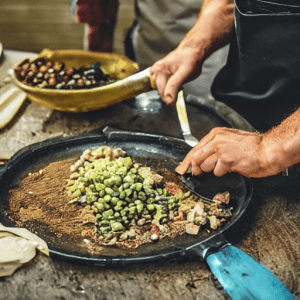 Proper food preparation is crucial during emergencies to safeguard the safety and well-being of you and your loved ones. This section will delve into the importance of food safety and hygiene practices, offer practical tips for storing and preserving food for extended periods, and discuss alternative cooking methods that can be utilized when resources are scarce.
Proper food preparation is crucial during emergencies to safeguard the safety and well-being of you and your loved ones. This section will delve into the importance of food safety and hygiene practices, offer practical tips for storing and preserving food for extended periods, and discuss alternative cooking methods that can be utilized when resources are scarce.
Prioritize Food Safety and Hygiene Practices During Emergencies
To prevent foodborne illnesses during an emergency, it is essential to emphasize food safety and hygiene. Here are some key practices to keep in mind that can help you maintain a safe food environment:
- Hand Hygiene: Always wash your hands thoroughly with soap and clean water before handling food to minimize contamination risks and ensure cleanliness.
- Sanitize Surfaces: Ensure all food preparation surfaces and utensils are clean and sanitized before use to prevent cross-contamination.
- Prevent Cross-Contamination: Keep raw and cooked foods separate to avoid cross-contamination that can lead to foodborne illnesses.
- Cook Thoroughly: Ensure food is cooked to the recommended internal temperature to eliminate harmful bacteria and ensure safety.
- Store Perishables Properly: Keep perishable items in a cool, dry place to prevent spoilage and maintain food quality.
By adhering to these practices, you can significantly reduce the risk of foodborne illness and ensure the safety of your meals during emergency situations, allowing you to focus on overcoming challenges more effectively.
Implement Effective Food Storage and Preservation Techniques
There are numerous methods to store and preserve food for long-term use, ensuring that your emergency supplies remain safe and nutritious. Consider the following storage strategies:
- Airtight Containers: Store food in airtight containers to protect it from moisture, air, and pests, which can compromise quality.
- Label and Date: Keep track of freshness by labeling each container with its contents and storage date to monitor shelf life effectively.
- Regularly Rotate Stock: Use older items first and replace them with new ones to maintain freshness in your emergency food supply and prevent waste.
- Control Temperature: Store food in a cool, dry area away from direct sunlight and excessive heat to prolong its shelf life.
- Utilize Freezing: Freeze perishable items when possible to significantly extend their shelf life and preserve nutrients effectively.
By implementing these storage and preservation techniques, you can ensure that your emergency food supply remains safe and fresh for an extended period, ready to support you when needed.
Explore Alternative Cooking Methods for Emergency Situations
In emergencies, traditional cooking methods may not always be accessible. Nevertheless, several alternative cooking techniques can be employed with minimal resources to ensure you can prepare nourishing meals:
- Solar Cooking: Solar cookers harness the sun’s energy to prepare meals. They are portable, easy to use, and require no fuel, making them an eco-friendly option.
- Camp Stoves: Compact and efficient, camp stoves can be powered by propane or butane and are ideal for outdoor cooking during emergencies.
- Cooking Over Fire: If you have access to a fire pit, cooking over open flames using wood or charcoal is a viable option. Basic fire-building skills are essential for this method.
- Portable Grills: Charcoal or gas grills can be used to cook meals outdoors when traditional stoves are unavailable, providing flexibility in meal preparation.
These alternative cooking methods offer practical solutions for meal preparation when conventional cooking options are limited or unavailable, helping you maintain your nutrition during emergencies.
Innovative Cooking Techniques for Limited Resources During Emergencies
When resources are scarce during an emergency, it’s vital to be resourceful and maximize what you have on hand. This section will explore various cooking strategies that can be implemented when resources are limited, such as one-pot cooking, creative uses for leftovers, and improvisation with available ingredients to create satisfying meals.
Mastering One-Pot Cooking for Maximum Efficiency
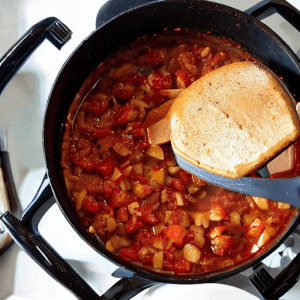 One-pot cooking is a versatile and efficient method for preparing entire meals using just one pot or skillet. This technique not only saves time but also reduces the need for multiple cooking utensils and conserves water for cleaning. Here are some tips for optimizing one-pot cooking:
One-pot cooking is a versatile and efficient method for preparing entire meals using just one pot or skillet. This technique not only saves time but also reduces the need for multiple cooking utensils and conserves water for cleaning. Here are some tips for optimizing one-pot cooking:
Select ingredients that can be cooked together, such as proteins, grains, and vegetables to streamline the process.
Layer your ingredients, starting with those that need longer cooking times, like meats or root vegetables, before gradually adding the rest.
Adjust the heat to ensure even cooking and prevent burning or sticking for a better texture.
Incorporate enough liquid, such as broth or water, to allow ingredients to simmer and create a delicious sauce or broth.
Cover the pot and let the mixture simmer until everything is cooked through and flavors meld beautifully.
Season with herbs, spices, or sauces before serving to enhance flavor and satisfaction.
One-pot cooking allows you to create flavorful and nutritious meals while using fewer cooking tools and conserving valuable resources.
Creative Repurposing of Leftovers for Sustainable Cooking
During emergencies, maximizing every ingredient while minimizing food waste is crucial. Utilizing leftovers creatively is an excellent way to repurpose ingredients and create new dishes. Here are some ideas:
Stir-Fries: Combine leftover vegetables, proteins, and grains for a quick and delicious stir-fry that uses up ingredients.
Soups or Stews: Create hearty soups or stews using leftover meats, vegetables, and broth for comforting meals.
Frittatas or Quiches: Mix leftover vegetables, meats, and eggs to make satisfying frittatas or quiches packed with flavor.
Wraps or Sandwiches: Use leftover meats, cheeses, and vegetables to craft tasty wraps or sandwiches that are filling.
Casseroles: Combine leftover items with pasta, rice, or potatoes to create hearty casseroles that everyone will enjoy.
By creatively repurposing leftovers, you can reduce food waste and prepare new, flavorful meals that keep your family satisfied.
Maximizing Limited Resources Effectively for Sustainable Meal Preparation
In emergencies, it is vital to use limited resources like water and fuel wisely to ensure sustainability. Here are some strategies to help you make the most of what you have:
Reuse water from boiling or washing for watering plants or cleaning purposes to conserve resources.
Opt for low-energy cooking techniques like simmering or slow cooking to conserve fuel and energy.
Insulate pots and pans to retain heat and minimize cooking time for efficiency.
Keep lids on pots and pans while cooking to trap heat and reduce the need for additional fuel, maximizing energy use.
Plan meals in advance to avoid overcooking and wasting precious resources.
By following these tips, you can maximize limited resources while ensuring efficient and sustainable cooking in emergency situations, making the most of what you have.
Frequently Asked Questions (FAQ) About Emergency Food Preparation
Can I use standard recipes in an emergency?
While traditional recipes may not always be feasible during emergencies, they can still serve as valuable inspiration. You might need to adapt them based on the supplies and resources available to you. Consider these suggestions:
Simplify: Look for recipes that require fewer ingredients and straightforward cooking methods to streamline the process.
Substitutions: If you lack a specific ingredient, find a suitable alternative or omit it entirely to suit your supplies.
Be Flexible: Adjust cooking times and temperatures according to your available resources for effective cooking.
Experiment: Don’t hesitate to be creative and try new flavors or combinations to keep meals exciting.
With resourcefulness and adaptability, you can still prepare delicious meals even with limited ingredients, ensuring you stay nourished.
How long will emergency food supplies last?
The shelf life of emergency food options varies depending on the type of food and storage conditions. Here are some general guidelines for various food types to help you gauge their longevity:
Shelf Life of Emergency Food Options:
Canned goods: 2-5 years or longer based on the product
Dehydrated foods: 5-10 years or more, depending on moisture content
Freeze-dried meals: At least 25 years, making them a reliable choice
To ensure freshness, regularly check expiration dates and rotate your emergency food supplies. Storing food in cool, dry conditions can also extend the shelf life of many items, ensuring they remain viable when needed.
Can I modify the recipes to accommodate dietary restrictions?
Absolutely! The recipes provided can be adjusted to meet your dietary needs or preferences without compromising flavor. Here are some tips for making substitutions:
Vegan or Vegetarian: Swap out meat or animal products for plant-based alternatives like tofu, tempeh, or lentils for protein.
Gluten-Free: Use gluten-free grains such as rice, quinoa, or gluten-free flour instead of wheat-based products to cater to dietary needs.
Dairy-Free: Replace dairy products with non-dairy alternatives, such as almond milk, coconut milk, or vegan cheese for those avoiding dairy.
Allergies: Avoid allergens and seek suitable substitutes that align with your dietary requirements for safety.
By making these adjustments, you can still enjoy nutritious and tasty meals that accommodate your dietary restrictions, ensuring everyone stays satisfied.
What non-perishable food products should I consider for disaster preparedness?
When stocking up on non-perishable food items for disaster preparedness, it’s essential to choose options with a long shelf life and critical nutrients for sustenance. Some top choices include:
Canned vegetables, fruits
The Article Survival Food Options: Essential Preparation and Storage Tips Was Found On https://limitsofstrategy.com
The Article Survival Food Options: Key Tips for Preparation and Storage First Appeared ON
: https://ad4sc.com

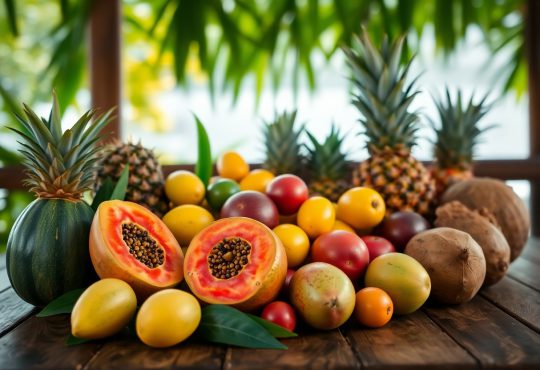
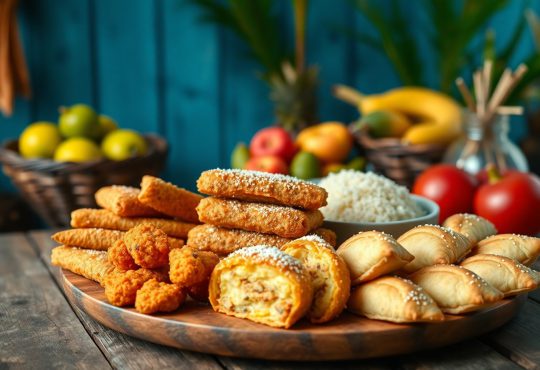
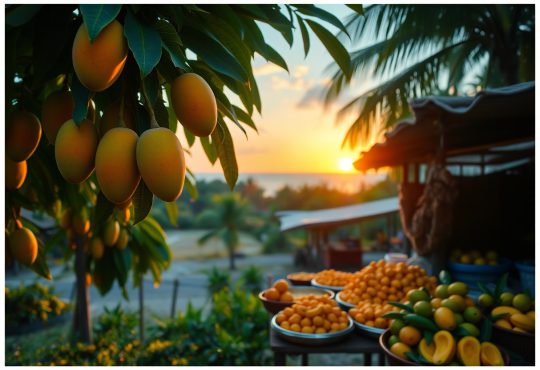







Your insights on the importance of preparing and storing emergency food supplies struck a chord with me, particularly in light of recent events that have underscored the necessity of being self-sufficient during crises. It’s fascinating how the world around us can change overnight due to natural disasters or unforeseen situations, prompting the need for robust emergency plans.
You raise such a valid point about the need for self-sufficiency during crises. It’s almost sobering to think that one day we can feel completely secure in our routine, and the next, we’re reminded of our vulnerability. I find it interesting how these experiences challenge us to rethink not just our emergency plans, but also our everyday habits and priorities.
You’re right, the unpredictability of the world really does highlight how crucial it is to have a plan in place. I’ve been thinking a lot about that idea of self-sufficiency, especially after seeing how some communities have rallied together during recent disasters. It’s incredible how people can come together to share resources and knowledge, which hints at our innate survival instincts.
I really appreciate how you’ve highlighted the importance of preparing and storing emergency food supplies. It’s such a crucial topic, especially considering how unpredictable life can be. I’ve personally found that having an emergency stockpile not only gives me peace of mind but also fosters a sense of empowerment. Last year during a severe storm, my family faced an unexpected power outage that lasted several days. Because I had taken the time to prepare our supplies ahead of time, we were able to navigate that situation more smoothly. We relied on our stock of canned goods and dried fruits, and it made a huge difference in maintaining our energy and morale.
I really appreciate how you highlight the importance of preparing emergency food supplies. It’s such a crucial yet often overlooked aspect of emergency planning. I remember a few years ago during a big storm, our area was without power for almost a week. We had some canned goods, but I really wished we had a wider variety of meals ready to go.
I really appreciate your insights on the importance of emergency food supplies! It reminds me of how I started my own stockpile after the power outage in our area last year. I found that having a variety of foods not only keeps my family nourished but also allows us to be creative in the kitchen even when resources are limited.
This topic really resonates with me, especially considering the unpredictability of today’s world. I’ve always believed that being prepared is about more than just having supplies; it’s about fostering a sense of security for ourselves and our loved ones. I remember during a recent power outage, I found myself rummaging through the pantry, trying to make the best of what I had on hand. It pushed me to think creatively with my cooking, but I also realized how essential it is to keep a well-organized stockpile for such moments.
Your insights on the importance of emergency food preparation resonate deeply with me, especially considering the unpredictable nature of recent events, from climate-related disasters to public health emergencies. I appreciate how you highlight not only the necessity of having a well-curated stockpile but also the value of nutrition in maintaining both physical and mental well-being during such trying times.